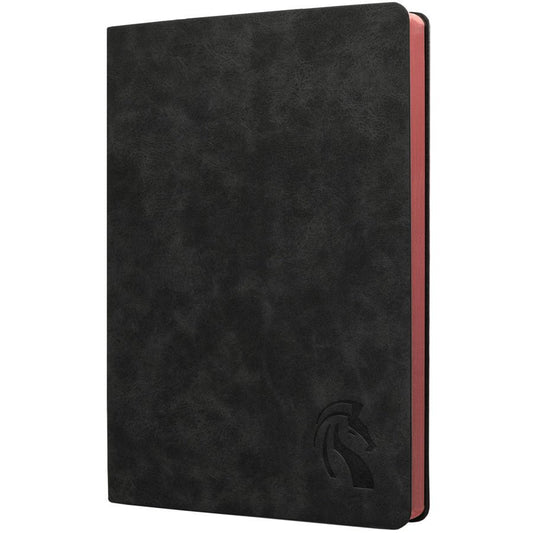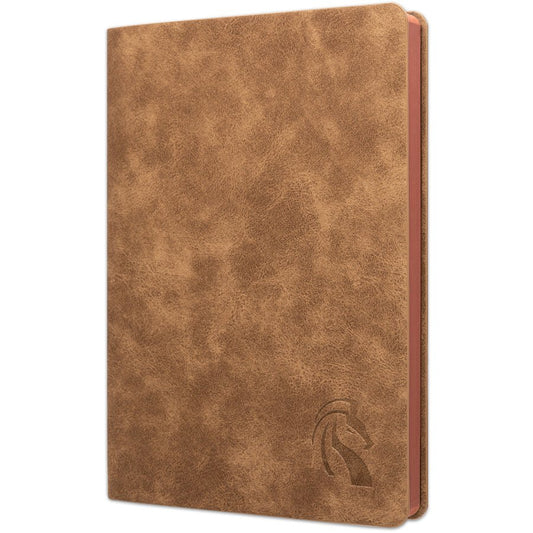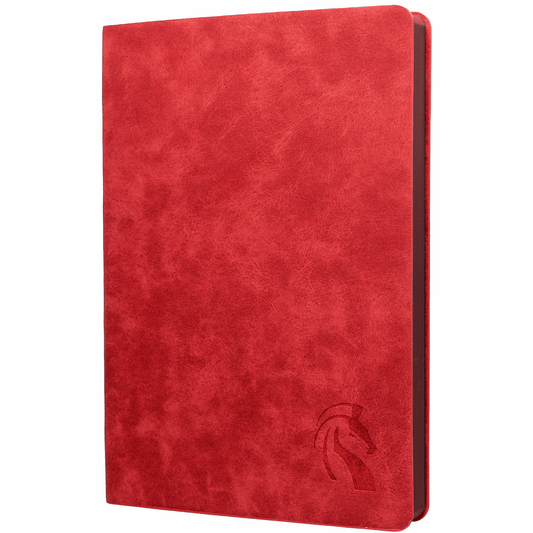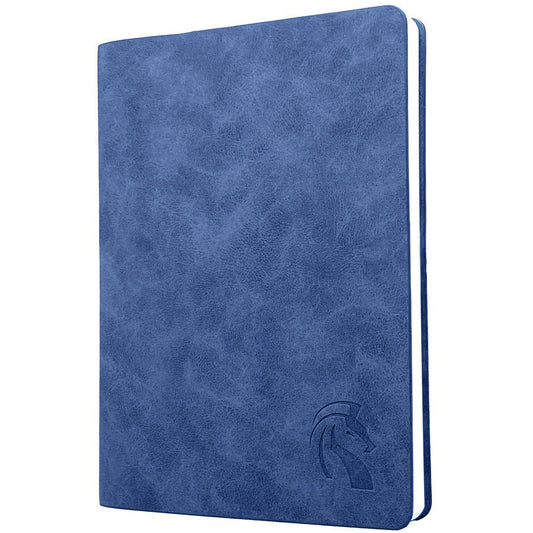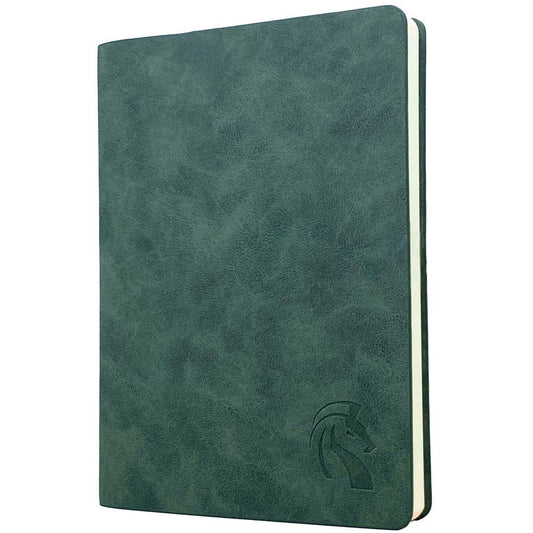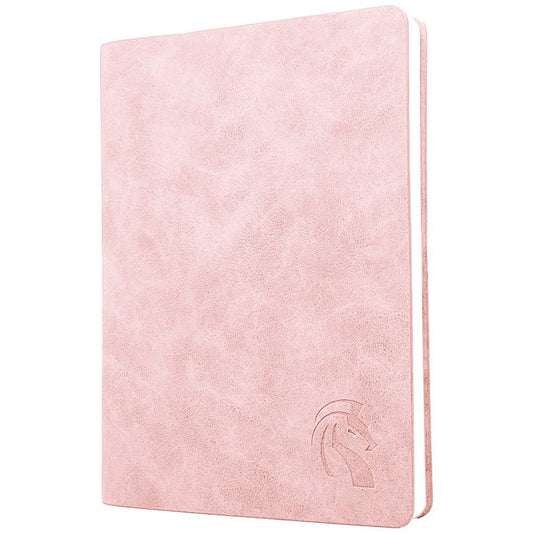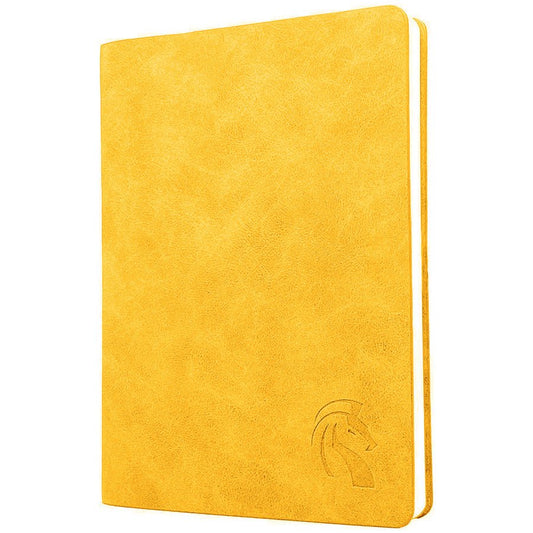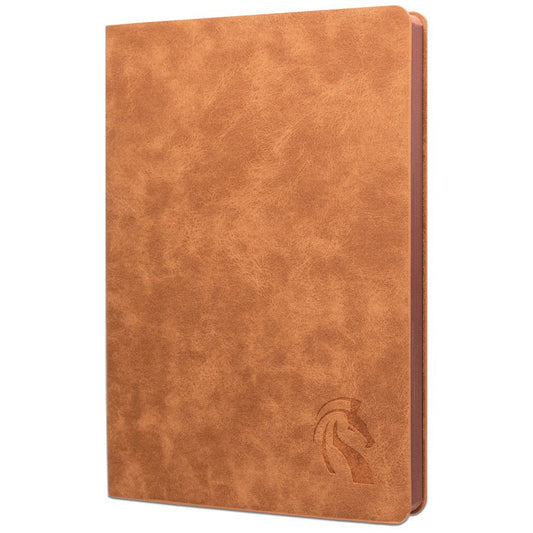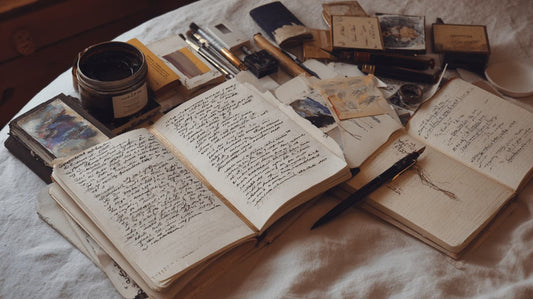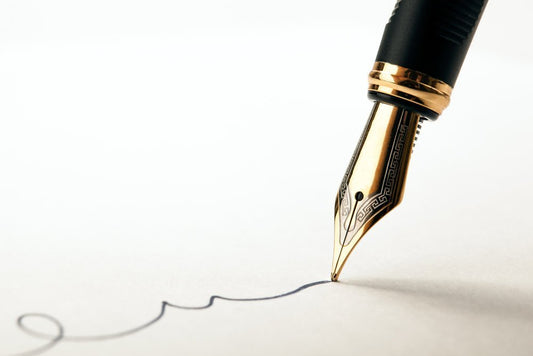
If a person appreciates writing with a fountain pen, it is generally for various reasons. I can't think of many things more satisfying than the way a pen glides across paper. However, writing with a scratchy nib is a frustrating experience. If you often use a fountain pen, you've probably had this other experience. Despite the fact that we have our own repair services and provide free nib tuning with the purchase of any pen or nib unit, I am frequently asked if there is anything that can be done at home to fix a scratchy nib. The answer could be yes, but I'm worried that the solution could end up causing more issues than it fixes. The following talk is based on the measures that I use to troubleshoot a scratchy writing pen.
This nib has a sprung up left tine.
If a nib that used to write smoothly suddenly becomes scratchy, it likely experienced some kind of trauma. The most prevalent being misalignment. One of the tines can shift in relation to the other if bumped or dropped. This should be your primary priority. When the tips aren't aligned properly, one of them will be ahead of the other on the paper, revealing the sharp inner margin of the tipping. It also poses a threat to steady ink flow. A ten-power loupe is required for those of us with mere mortal vision to make out the crooked balancing. Only the courageous should proceed; it will require passing the pen to others before the problem can be fixed.
Do fountain pens bleed through paper?

Or it could be a "trainer pen," as opposed to a "writer," that you're looking for.
When the right tine is raised, then the left, we can tell if the tipping is even.
Keep the loupe near your eye and the pen's point aimed towards the loupe. Everything takes place within touching distance of your face. Look for the "iridium" forms to be closely spaced and in a symmetrical arrangement with the points at the same level. (A flexible nib will touch the paper, whereas a hard one will leave a tiny space.) Test the tips by lifting the low side with your fingernail if you see one side is more than 5% higher than the other. Try the opposite side to see if it rises back to its original position if it rises by an additional 5% over the first. If this happens, and the tines are sturdy, the nib is perfectly balanced.
If one side consistently averages more than the other, you know exactly where to look for the source of the scratchiness.
This nib is just right.
Then check to see if the nib is centered on the feed, if this is the case. When put aside, the solution may be straightforward. Carefully realign the nib with the feed. The best place to apply force is at the curve's center, rather than at the shoulder or the tip of the tine. If you find that you've gone too far, try pushing from the opposite side, taking care to move the nib very slightly this time. Keep doing this until the slit meets the middle of the feed. (Some nibs and feeds work better when they aren't perfectly aligned, but that's a topic for another day.)
A nib's readiness for use is determined solely by how it performs on paper and in ink. This is because the ink works as a lubricant and the paper provides friction.
It's possible that the nib has rough edges or corners that are sticking on the paper, causing it to feel scratchy. To determine exactly where the scratch is most noticeable, I prefer to draw large circles and examine the results. I use a directional arrow to indicate the arc's pointing direction and a pencil to indicate the precise location of the scratch. Check your loupe or microscope again to locate the cutting edge. Most likely, it can be found near the inner margin, where the slit meets the page.

Now comes the hard part. There must be Micromesh 10,000 involved. It is supplied as sheets measuring 3" by 6" and featuring an abrasive surface adhered to a rubberized fabric backing. Since it sinks under the pressure of tipping, I find that it works better than a hard surface abrasive like an Arkansas stone or Mylar disks. To increase the softness and sinking quality of the Micromesh, I like to place it on top of a few sheets of newspaper. Ink the pen and make two or three passes in the direction of the scratch on the Micromesh. Place the pen back down on the paper and create the circle once more. There shouldn't be any remnants of the sharp edge or corner after having caught it against the abrasive. Repete the process, this time using a ten-power loupe to carefully assess the smoothing's success.
Caution: Micromesh is very aggressive, even though it provides a smooth finish. If you use it too much, you risk wearing down the nib's tip. The results of this smoothing process may wind up being completely unintended. Sharp corners can be made in either direction by flattening the tip.
The technique of smoothing is more art than science due to the fact that one person's preferences in a pen's tip may not appeal to another. Below is a list of traits that various advice may include which will appear positive in one light and detrimental in another. The author's ability to make their own compromises will improve as they become familiarity with these constraints.
1. Extra-fine point.
Because it is capable of very little marks it is capable of creating notes in margins. These days, you can find disposable pens in a wide variety of styles, and they all produce incredibly fine lines without requiring any special skill to operate. These writing instruments function otherwise than fountain pens and may be the optimal choice in certain circumstances. But everyone of us has our own story about why we prefer one of these writing implements over another. Preferred by most of our grandparents, the extra-fine point can be quite legible. But, if used with everything but the lightest touch, the extra-fine point will have excessive "tooth" and be experienced as scratchy.
There are a few issues with this Pelikan M800 BB nib straight from the factory.
As an initial matter, the tipping isn't quite aligned, and secondly, the area where the ink would normally make contact with the paper is concave and hence would not.
Margins on the inside are rounded, two. These days, it's common to find pens with rounded inner edges on the tips. This is roundness at the place where the slit joins the paper. Manufacturers do this to insure smoothness. However, skipping can ensue. Writing can be frustrating if ink does not transfer to the paper at the moment of contact. This is especially true for the first stroke. Putting in "break-in" time with Micromesh can help the tip stop skipping. A closer proximity between the ink and the paper is achieved by trimming off a little portion of the pen's tip, which brings the slit into closer proximity to the writing surface. But (and this is important) notice the disclaimer above.
A scratchy flat-footed tip
Building a foot, 3. For the ink to flow smoothly, the foot will serve as a flat surface. Nib hydroplaning occurs while working with light pressure, on the right paper, and at the right tilt. This effect may manifest for some but not for others. Sometimes it's hard to pin down. The "flat" necessary for this effect, if it has sharp edges can snag and drag. Heaven and hell can be found on the end of a foot-long sliver.

Snapshot of a flat-footed nib from the side
Fourth, with a high-angle foot or a low-angle foot. In creating and selling pens, manufacturers and retailers keep the average writer in mind when designing and sourcing their nibs. Because the smoothest point will have a rounded but flat "foot" at the angle where the writer tip contacts the paper, each person's foot is slightly different. The typical writing position for a pen is roughly 55 degrees above the paper. Those who prefer a higher angle or lower angle may find that the way the tip is cut is not good for them. Again, the author can get the perfect fit for a new foot without leaving home by utilizing a smoothing cloth. (Caution, see up top.)
Smooth writing is achieved with wet nibs. 5. Because ink works as a lubricant, the more ink under the tip, the smoother the pen will feel, all other variables being equal. Too much ink from a pen can be annoying because it doesn't dry quickly and can cause the paper to flow through. As well as being unattractive, the bleeding might hinder readability. The ink flow of a nib can be easily adjusted to produce more fluid writing. Decreases are trickier to implement, so be wary about making too large of a change. If the tines are not evenly spaced, the nib can be made to write more scratchily, therefore this modification is not for the faint of heart. (Refer to the second paragraph above.)
Increasing ink flow
Boost the ink flow by catching the nib's shoulders with your thumbnails while holding the pen on a large, open desk with the nib pointing upright and looking at the underside of the nib (the feed). Separate the two halves by pulling apart and pressing down lightly on the nib's top. The slit gap can be seen open when light enters from behind. Use extreme caution and always double-check your work using a pen test. You should have some paper towels handy and not be going out to dinner right after testing the nib, since you will most likely end up with some ink on your fingers.
In order to reduce the ink flow, the nib may need to be removed from the pen, which is a more time-consuming and frustrating process. Pinch the shoulders together uniformly to slow the ink flow somewhat.
As can be seen, a smooth nib is the product of a number of dynamics working together. Nib balance is an art that requires practice and concentration. The rewards are considerable, but hazards abound.

LeStallion PU Leather Journals
LeStallion Soft Cover PU Leather Journals inspires and excites you to write more, allow you to further grow and develop, so you may achieve your goals and dreams!
SHOP LESTALLION
